Recenzja tabletu konwertowalnego Chuwi Hi10 Max - niedroga alternatywa dla Surface Pro z procesorem Intela

Wraz z nowym Hi10 Max, Chuwi wprowadza na rynek niedrogie urządzenie konwertowalne z dołączaną klawiaturą i rysikiem. Napędza go procesor Intel N100 12. generacji w połączeniu z 12 GB pamięci RAM. Wyświetlacz IPS oferuje wysoką rozdzielczość 2,880 x 1,920 w proporcjach 3:2, a dysk SSD oferuje 512 GB pamięci masowej. W cenie 319 USD za kompletny pakiet (w tym tablet, klawiaturę i rysik), biorąc pod uwagę jego niską cenę, jest on przede wszystkim porównywany do tabletów Android.
Potencjalni konkurenci w porównaniu
Ocena | Wersja | Data | Model | Waga | Wysokość | Rozmiar | Rezolucja | Cena |
|---|---|---|---|---|---|---|---|---|
| 79 % | v8 | 10/2024 | Chuwi Hi10 Max N100, UHD Graphics 24EUs (Alder Lake-N) | 768 g | 9 mm | 12.96" | 2880x1920 | |
| 78.7 % | v8 | 09/2024 | Xiaomi Redmi Pad Pro SD 7s Gen 2, Adreno 710 | 571 g | 7.52 mm | 12.10" | 2560x1600 | |
| 74.8 % | v8 | 06/2024 | Lenovo Tab P12 Paper Dimensity 7050, Mali-G68 MP4 | 615 g | 6.9 mm | 12.70" | 2944x1840 | |
| 81.2 % v7 (old) | v7 (old) | 06/2024 | Teclast T65 Max Helio G99, Mali-G57 MP2 | 710 g | 8.2 mm | 12.95" | 1920x1200 | |
| 79.5 % v7 (old) | v7 (old) | 06/2024 | Asus BR1104CGA-N00007XA N100, UHD Graphics 24EUs (Alder Lake-N) | 1.6 kg | 21.2 mm | 11.60" | 1366x768 |
Obudowa i łączność
Hi10 Max to tablet bez wbudowanej podpórki. Chuwi wykorzystuje metalową konstrukcję, a ciemnoszara obudowa sprawia wrażenie wysokiej jakości, choć lekkie skrzypienie jest zauważalne, gdy urządzenie jest skręcone. Ekran może być również wyraźnie wciśnięty z odrobiną siły, ale nie wpływa to negatywnie na funkcjonalność. Normalne wejścia dotykowe nie powodują tego problemu. W zestawie znajduje się tylna pokrywa z wycięciem na kamerę, której dolna połowa mocowana jest magnetycznie do obudowy. Górną część można złożyć, by pełniła funkcję podstawki, co sprawdza się w praktyce i zapewnia dodatkową ochronę. Opcjonalna pokrywa klawiatury jest przymocowana do spodu, ale połączenie nie jest szczególnie stabilne i ma tendencję do szybkiego luzowania się.
Tylko 768 gramów składa się na grubość tabletu, która wynosi 9 mm. Po założeniu obu pokryw, całkowita waga wzrasta do 1375 gramów, co sprawia, że całość jest grubsza niż większość nowoczesnych laptopów o niecałe 2 cm. Kompaktowy 36-watowy zasilacz jest lekki i waży 135 gramów.
Jeśli chodzi o funkcje, Hi10 Max obejmuje najważniejsze elementy, w tym Wi-Fi 6 (choć 1x1), Bluetooth 5.2 i oczywiście porty USB. Oprócz dwóch portów USB-C, jest też port USB-A, który okazuje się bardzo praktyczny w codziennym użytkowaniu. Wyjście micro HDMI jest dołączone, choć wymaga adaptera. Tablet nie oferuje żadnych opcji konserwacji lub aktualizacji. Jeśli chodzi o kamery, przednia kamera 5 MP i tylny czujnik 8 MP z autofokusem rejestrują przyzwoite obrazy.
| Networking | |
| Chuwi Hi10 Max | |
| iperf3 transmit AXE11000 | |
| iperf3 receive AXE11000 | |
| Xiaomi Redmi Pad Pro | |
| iperf3 transmit AXE11000 | |
| iperf3 receive AXE11000 | |
| Lenovo Tab P12 Paper | |
| iperf3 transmit AXE11000 | |
| iperf3 receive AXE11000 | |
| Teclast T65 Max | |
| iperf3 transmit AXE11000 | |
| iperf3 receive AXE11000 | |
| Asus BR1104CGA-N00007XA | |
| iperf3 transmit AXE11000 | |
| iperf3 receive AXE11000 | |

Urządzenia wejściowe - ekran dotykowy i podświetlana klawiatura
Pojemnościowy ekran dotykowy oferuje płynne przesuwanie i działa bez żadnych problemów. Dołączony rysik (H7, z 1024 poziomami nacisku i baterią AAAA) wygodnie leży w dłoni, choć nie można go przymocować do urządzenia. Klawiatura opcjonalnej pokrywy jest podświetlana, ale skok klawiszy jest krótki, a klawisze są nieco głośne. Ogólnie rzecz biorąc, wrażenia z pisania są przyzwoite i lepsze niż korzystanie z klawiatury ekranowej. Dostępny jest jednak tylko układ angielski. Posiada dwustopniowe białe podświetlenie, co jest przyjemną funkcją. ClickPad jest dość mały, ale spełnia swoje zadanie.
Wyświetlacz - IPS o rozdzielczości 3K
Chuwi wykorzystuje 12,96-calowy wyświetlacz IPS firmy LG Philips o proporcjach 3:2 i wysokiej rozdzielczości 2 880 x 1 920 pikseli. Subiektywne wrażenie wizualne panelu 60 Hz jest ogólnie całkiem dobre, ponieważ treści są wyświetlane ostro z wystarczająco żywymi kolorami. Na jasnych powierzchniach występuje jednak niewielka ziarnistość spowodowana ekranem dotykowym i można zaobserwować niewielkie efekty zjawy, ponieważ czasy reakcji są nieco powolne. Widoczne są również aureole na ciemnych obrazach, ale PWM (modulacja szerokości impulsu) nie jest używana. Odbicia od błyszczącego panelu mogą stanowić problem na zewnątrz, ale stabilność kąta widzenia jest akceptowalna.
W naszych pomiarach przy użyciu profesjonalnego oprogramowania CalMAN, wyświetlacz osiąga średnią jasność ponad 400 cd/m² i wysoki maksymalny współczynnik kontrastu. Biorąc pod uwagę przedział cenowy, jest to całkiem imponujące. Preinstalowany profil kolorów wykazuje jednak zauważalny niebieski odcień, który udało nam się wyeliminować za pomocą naszej kalibracji (profil jest dostępny do bezpłatnego pobrania w ramce po prawej stronie). Udało nam się również znacznie zmniejszyć odchylenia kolorów, chociaż wartość 100% nadal nieznacznie przekracza docelową wartość 3. Dzięki prawie pełnemu pokryciu sRGB wyświetlacz nadaje się nawet do edycji obrazów.
| |||||||||||||||||||||||||
rozświetlenie: 88 %
na akumulatorze: 419 cd/m²
kontrast: 2328:1 (czerń: 0.18 cd/m²)
ΔE ColorChecker Calman: 4 | ∀{0.5-29.43 Ø4.78}
calibrated: 1.4
ΔE Greyscale Calman: 5.3 | ∀{0.09-98 Ø5}
68.5% AdobeRGB 1998 (Argyll 3D)
96.8% sRGB (Argyll 3D)
67.2% Display P3 (Argyll 3D)
Gamma: 2.27
CCT: 7588 K
| Chuwi Hi10 Max LP129WT112684, IPS, 2880x1920, 13", 60 Hz | Xiaomi Redmi Pad Pro IPS, 2560x1600, 12.1", 120 Hz | Lenovo Tab P12 Paper LTPS, 2944x1840, 12.7", 60 Hz | Teclast T65 Max IPS, 1920x1200, 13", 60 Hz | Asus BR1104CGA-N00007XA TN, 1366x768, 11.6", 60 Hz | |
|---|---|---|---|---|---|
| Display | -35% | ||||
| Display P3 Coverage (%) | 67.2 | 43.19 -36% | |||
| sRGB Coverage (%) | 96.8 | 64.95 -33% | |||
| AdobeRGB 1998 Coverage (%) | 68.5 | 44.62 -35% | |||
| Response Times | 35% | 3% | -8% | 8% | |
| Response Time Grey 50% / Grey 80% * (ms) | 44.8 ? | 25 ? 44% | 35.7 ? 20% | 46.7 ? -4% | 37.68 ? 16% |
| Response Time Black / White * (ms) | 19.8 ? | 14.6 ? 26% | 22.7 ? -15% | 22.1 ? -12% | 20 ? -1% |
| PWM Frequency (Hz) | 25000 ? | ||||
| PWM Amplitude * (%) | |||||
| Screen | -9% | -24% | -77% | -56% | |
| Brightness middle (cd/m²) | 419 | 513 22% | 148 -65% | 296 -29% | 290 -31% |
| Brightness (cd/m²) | 413 | 480 16% | 139 -66% | 290 -30% | 274 -34% |
| Brightness Distribution (%) | 88 | 86 -2% | 90 2% | 87 -1% | 87 -1% |
| Black Level * (cd/m²) | 0.18 | 0.4 -122% | 0.3 -67% | 0.47 -161% | 0.48 -167% |
| Contrast (:1) | 2328 | 1283 -45% | 493 -79% | 630 -73% | 604 -74% |
| Colorchecker dE 2000 * | 4 | 2.82 29% | 3.59 10% | 7.1 -78% | 7.68 -92% |
| Colorchecker dE 2000 max. * | 7.6 | 8.83 -16% | 5.52 27% | 22.2 -192% | 9.6 -26% |
| Colorchecker dE 2000 calibrated * | 1.4 | 1.9 -36% | |||
| Greyscale dE 2000 * | 5.3 | 2.9 45% | 3 43% | 8 -51% | 7.4 -40% |
| Gamma | 2.27 97% | 2.265 97% | 2.243 98% | 2.204 100% | 2.658 83% |
| CCT | 7588 86% | 7189 90% | 7115 91% | 7992 81% | 8017 81% |
| Całkowita średnia (program / ustawienia) | 13% /
-0% | -11% /
-19% | -43% /
-63% | -28% /
-42% |
* ... im mniej tym lepiej
Wyświetl czasy reakcji
| ↔ Czas reakcji od czerni do bieli | ||
|---|---|---|
| 19.8 ms ... wzrost ↗ i spadek ↘ łącznie | ↗ 8.1 ms wzrost | |
| ↘ 11.7 ms upadek | ||
| W naszych testach ekran wykazuje dobry współczynnik reakcji, ale może być zbyt wolny dla graczy rywalizujących ze sobą. Dla porównania, wszystkie testowane urządzenia wahają się od 0.1 (minimum) do 240 (maksimum) ms. » 42 % wszystkich urządzeń jest lepszych. Oznacza to, że zmierzony czas reakcji jest zbliżony do średniej wszystkich testowanych urządzeń (20.2 ms). | ||
| ↔ Czas reakcji 50% szarości do 80% szarości | ||
| 44.8 ms ... wzrost ↗ i spadek ↘ łącznie | ↗ 20.8 ms wzrost | |
| ↘ 24 ms upadek | ||
| W naszych testach ekran wykazuje powolne tempo reakcji, co będzie niezadowalające dla graczy. Dla porównania, wszystkie testowane urządzenia wahają się od 0.165 (minimum) do 636 (maksimum) ms. » 75 % wszystkich urządzeń jest lepszych. Oznacza to, że zmierzony czas reakcji jest gorszy od średniej wszystkich testowanych urządzeń (31.6 ms). | ||
Migotanie ekranu / PWM (modulacja szerokości impulsu)
| Migotanie ekranu/nie wykryto PWM | |||
Dla porównania: 53 % wszystkich testowanych urządzeń nie używa PWM do przyciemniania wyświetlacza. Jeśli wykryto PWM, zmierzono średnio 8118 (minimum: 5 - maksimum: 343500) Hz. | |||
Wydajność - Intel N100 i 12 GB RAM
Chuwi Hi10 Max jest zasilany przez Intel N100, procesor zwykle spotykany w mini PC. Jest on oparty na generacji Intel Alder Lake i posiada 4 wydajne rdzenie bez hiperwątkowości, z taktowaniem do 3,4 GHz. Może zużywać do 13 watów, co czyni go jednym z najszybszych systemów N100 w naszej bazie danych. Wydajność pozostaje stabilna nawet przy długotrwałym obciążeniu i podczas pracy na zasilaniu bateryjnym.
Dzięki 12 GB pamięci RAM, Hi10 Max oferuje wystarczającą wydajność do podstawowych zadań. Dzięki dyskowi SSD NVMe, system szybko reaguje na dane wejściowe i zapewnia wystarczającą ilość pamięci masowej o pojemności 512 GB. Zintegrowany procesor graficzny UHD Graphics dobrze radzi sobie z filmami w wysokiej rozdzielczości, ale urządzenie nie nadaje się do gier. W przypadku gier proszę pozostać przy prostych grach planszowych lub karcianych dostępnych w Microsoft Store.
Cinebench R15 Multi continuous test
Cinebench R23: Multi Core | Single Core
Cinebench R20: CPU (Multi Core) | CPU (Single Core)
Cinebench R15: CPU Multi 64Bit | CPU Single 64Bit
Blender: v2.79 BMW27 CPU
7-Zip 18.03: 7z b 4 | 7z b 4 -mmt1
Geekbench 6.5: Multi-Core | Single-Core
Geekbench 5.5: Multi-Core | Single-Core
HWBOT x265 Benchmark v2.2: 4k Preset
LibreOffice : 20 Documents To PDF
R Benchmark 2.5: Overall mean
| CPU Performance rating | |
| Średnia w klasie Convertible | |
| Geekom MiniAir 12 | |
| Chuwi Hi10 Max | |
| Minisforum Venus Series UN100D | |
| Przeciętny Intel Processor N100 | |
| Xiaomi Redmi Pad Pro -12! | |
| Newsmay AC8F-POE | |
| Lenovo Tab P12 Paper -12! | |
| Asus BR1104CGA-N00007XA | |
| Teclast T65 Max -12! | |
| Cinebench R23 / Multi Core | |
| Średnia w klasie Convertible (2949 - 29063, n=56, ostatnie 2 lata) | |
| Geekom MiniAir 12 | |
| Chuwi Hi10 Max | |
| Przeciętny Intel Processor N100 (1577 - 2983, n=8) | |
| Minisforum Venus Series UN100D | |
| Newsmay AC8F-POE | |
| Asus BR1104CGA-N00007XA | |
| Cinebench R23 / Single Core | |
| Średnia w klasie Convertible (914 - 2163, n=56, ostatnie 2 lata) | |
| Geekom MiniAir 12 | |
| Chuwi Hi10 Max | |
| Minisforum Venus Series UN100D | |
| Przeciętny Intel Processor N100 (747 - 942, n=8) | |
| Newsmay AC8F-POE | |
| Asus BR1104CGA-N00007XA | |
| Cinebench R20 / CPU (Multi Core) | |
| Średnia w klasie Convertible (1124 - 11357, n=56, ostatnie 2 lata) | |
| Geekom MiniAir 12 | |
| Chuwi Hi10 Max | |
| Przeciętny Intel Processor N100 (590 - 1139, n=8) | |
| Minisforum Venus Series UN100D | |
| Newsmay AC8F-POE | |
| Asus BR1104CGA-N00007XA | |
| Cinebench R20 / CPU (Single Core) | |
| Średnia w klasie Convertible (348 - 827, n=56, ostatnie 2 lata) | |
| Geekom MiniAir 12 | |
| Chuwi Hi10 Max | |
| Minisforum Venus Series UN100D | |
| Przeciętny Intel Processor N100 (285 - 358, n=8) | |
| Newsmay AC8F-POE | |
| Asus BR1104CGA-N00007XA | |
| Cinebench R15 / CPU Multi 64Bit | |
| Średnia w klasie Convertible (478 - 4830, n=59, ostatnie 2 lata) | |
| Geekom MiniAir 12 | |
| Chuwi Hi10 Max | |
| Przeciętny Intel Processor N100 (246 - 479, n=8) | |
| Minisforum Venus Series UN100D | |
| Newsmay AC8F-POE | |
| Asus BR1104CGA-N00007XA | |
| Cinebench R15 / CPU Single 64Bit | |
| Średnia w klasie Convertible (149.8 - 317, n=56, ostatnie 2 lata) | |
| Geekom MiniAir 12 | |
| Chuwi Hi10 Max | |
| Minisforum Venus Series UN100D | |
| Przeciętny Intel Processor N100 (118.8 - 155, n=8) | |
| Newsmay AC8F-POE | |
| Asus BR1104CGA-N00007XA | |
| Blender / v2.79 BMW27 CPU | |
| Asus BR1104CGA-N00007XA | |
| Newsmay AC8F-POE | |
| Minisforum Venus Series UN100D | |
| Przeciętny Intel Processor N100 (1017 - 1956, n=8) | |
| Chuwi Hi10 Max | |
| Geekom MiniAir 12 | |
| Średnia w klasie Convertible (107 - 1051, n=55, ostatnie 2 lata) | |
| 7-Zip 18.03 / 7z b 4 | |
| Średnia w klasie Convertible (12977 - 121368, n=56, ostatnie 2 lata) | |
| Geekom MiniAir 12 | |
| Chuwi Hi10 Max | |
| Przeciętny Intel Processor N100 (7532 - 13291, n=8) | |
| Minisforum Venus Series UN100D | |
| Newsmay AC8F-POE | |
| Asus BR1104CGA-N00007XA | |
| 7-Zip 18.03 / 7z b 4 -mmt1 | |
| Średnia w klasie Convertible (3672 - 6540, n=56, ostatnie 2 lata) | |
| Minisforum Venus Series UN100D | |
| Chuwi Hi10 Max | |
| Geekom MiniAir 12 | |
| Przeciętny Intel Processor N100 (3046 - 3958, n=8) | |
| Newsmay AC8F-POE | |
| Asus BR1104CGA-N00007XA | |
| Geekbench 6.5 / Multi-Core | |
| Średnia w klasie Convertible (2291 - 21269, n=57, ostatnie 2 lata) | |
| Geekom MiniAir 12 | |
| Chuwi Hi10 Max | |
| Minisforum Venus Series UN100D | |
| Przeciętny Intel Processor N100 (2283 - 3282, n=8) | |
| Newsmay AC8F-POE | |
| Xiaomi Redmi Pad Pro | |
| Lenovo Tab P12 Paper | |
| Asus BR1104CGA-N00007XA | |
| Teclast T65 Max | |
| Geekbench 6.5 / Single-Core | |
| Średnia w klasie Convertible (1003 - 2978, n=58, ostatnie 2 lata) | |
| Minisforum Venus Series UN100D | |
| Geekom MiniAir 12 | |
| Chuwi Hi10 Max | |
| Newsmay AC8F-POE | |
| Przeciętny Intel Processor N100 (1070 - 1245, n=8) | |
| Asus BR1104CGA-N00007XA | |
| Xiaomi Redmi Pad Pro | |
| Lenovo Tab P12 Paper | |
| Teclast T65 Max | |
| Geekbench 5.5 / Multi-Core | |
| Średnia w klasie Convertible (2188 - 22023, n=55, ostatnie 2 lata) | |
| Geekom MiniAir 12 | |
| Chuwi Hi10 Max | |
| Minisforum Venus Series UN100D | |
| Xiaomi Redmi Pad Pro | |
| Przeciętny Intel Processor N100 (1911 - 2896, n=9) | |
| Newsmay AC8F-POE | |
| Lenovo Tab P12 Paper | |
| Asus BR1104CGA-N00007XA | |
| Teclast T65 Max | |
| Geekbench 5.5 / Single-Core | |
| Średnia w klasie Convertible (806 - 2275, n=55, ostatnie 2 lata) | |
| Geekom MiniAir 12 | |
| Minisforum Venus Series UN100D | |
| Chuwi Hi10 Max | |
| Przeciętny Intel Processor N100 (915 - 1018, n=9) | |
| Newsmay AC8F-POE | |
| Asus BR1104CGA-N00007XA | |
| Xiaomi Redmi Pad Pro | |
| Lenovo Tab P12 Paper | |
| Teclast T65 Max | |
| HWBOT x265 Benchmark v2.2 / 4k Preset | |
| Średnia w klasie Convertible (3.43 - 36.2, n=56, ostatnie 2 lata) | |
| Geekom MiniAir 12 | |
| Chuwi Hi10 Max | |
| Przeciętny Intel Processor N100 (1.72 - 3.49, n=8) | |
| Minisforum Venus Series UN100D | |
| Newsmay AC8F-POE | |
| Asus BR1104CGA-N00007XA | |
| LibreOffice / 20 Documents To PDF | |
| Asus BR1104CGA-N00007XA | |
| Newsmay AC8F-POE | |
| Przeciętny Intel Processor N100 (67 - 129.6, n=8) | |
| Chuwi Hi10 Max | |
| Minisforum Venus Series UN100D | |
| Geekom MiniAir 12 | |
| Średnia w klasie Convertible (42.5 - 84.3, n=55, ostatnie 2 lata) | |
| R Benchmark 2.5 / Overall mean | |
| Asus BR1104CGA-N00007XA | |
| Newsmay AC8F-POE | |
| Przeciętny Intel Processor N100 (0.822 - 1.06, n=8) | |
| Minisforum Venus Series UN100D | |
| Chuwi Hi10 Max | |
| Geekom MiniAir 12 | |
| Średnia w klasie Convertible (0.3985 - 0.84, n=55, ostatnie 2 lata) | |
* ... im mniej tym lepiej
AIDA64: FP32 Ray-Trace | FPU Julia | CPU SHA3 | CPU Queen | FPU SinJulia | FPU Mandel | CPU AES | CPU ZLib | FP64 Ray-Trace | CPU PhotoWorxx
| Performance rating | |
| Średnia w klasie Convertible | |
| Chuwi Hi10 Max | |
| Minisforum Venus Series UN100D | |
| Asus BR1104CGA-N00007XA | |
| Newsmay AC8F-POE | |
| Przeciętny Intel Processor N100 | |
| Geekom MiniAir 12 | |
| AIDA64 / FP32 Ray-Trace | |
| Średnia w klasie Convertible (1480 - 64158, n=55, ostatnie 2 lata) | |
| Chuwi Hi10 Max | |
| Asus BR1104CGA-N00007XA | |
| Minisforum Venus Series UN100D | |
| Newsmay AC8F-POE | |
| Przeciętny Intel Processor N100 (837 - 2179, n=8) | |
| Geekom MiniAir 12 | |
| AIDA64 / FPU Julia | |
| Średnia w klasie Convertible (11392 - 183760, n=55, ostatnie 2 lata) | |
| Chuwi Hi10 Max | |
| Asus BR1104CGA-N00007XA | |
| Minisforum Venus Series UN100D | |
| Newsmay AC8F-POE | |
| Przeciętny Intel Processor N100 (4395 - 11392, n=8) | |
| Geekom MiniAir 12 | |
| AIDA64 / CPU SHA3 | |
| Średnia w klasie Convertible (797 - 8151, n=55, ostatnie 2 lata) | |
| Chuwi Hi10 Max | |
| Asus BR1104CGA-N00007XA | |
| Minisforum Venus Series UN100D | |
| Przeciętny Intel Processor N100 (307 - 797, n=8) | |
| Newsmay AC8F-POE | |
| Geekom MiniAir 12 | |
| AIDA64 / CPU Queen | |
| Średnia w klasie Convertible (14686 - 145339, n=55, ostatnie 2 lata) | |
| Minisforum Venus Series UN100D | |
| Chuwi Hi10 Max | |
| Newsmay AC8F-POE | |
| Asus BR1104CGA-N00007XA | |
| Przeciętny Intel Processor N100 (8663 - 22605, n=8) | |
| Geekom MiniAir 12 | |
| AIDA64 / FPU SinJulia | |
| Średnia w klasie Convertible (1120 - 29155, n=55, ostatnie 2 lata) | |
| Chuwi Hi10 Max | |
| Minisforum Venus Series UN100D | |
| Asus BR1104CGA-N00007XA | |
| Newsmay AC8F-POE | |
| Przeciętny Intel Processor N100 (430 - 1120, n=8) | |
| Geekom MiniAir 12 | |
| AIDA64 / FPU Mandel | |
| Średnia w klasie Convertible (4929 - 97193, n=55, ostatnie 2 lata) | |
| Chuwi Hi10 Max | |
| Asus BR1104CGA-N00007XA | |
| Minisforum Venus Series UN100D | |
| Newsmay AC8F-POE | |
| Przeciętny Intel Processor N100 (2217 - 5749, n=8) | |
| Geekom MiniAir 12 | |
| AIDA64 / CPU AES | |
| Średnia w klasie Convertible (15752 - 139734, n=55, ostatnie 2 lata) | |
| Chuwi Hi10 Max | |
| Minisforum Venus Series UN100D | |
| Przeciętny Intel Processor N100 (8421 - 21774, n=8) | |
| Asus BR1104CGA-N00007XA | |
| Newsmay AC8F-POE | |
| Geekom MiniAir 12 | |
| AIDA64 / CPU ZLib | |
| Średnia w klasie Convertible (218 - 2001, n=55, ostatnie 2 lata) | |
| Chuwi Hi10 Max | |
| Asus BR1104CGA-N00007XA | |
| Minisforum Venus Series UN100D | |
| Newsmay AC8F-POE | |
| Przeciętny Intel Processor N100 (81.7 - 218, n=8) | |
| Geekom MiniAir 12 | |
| AIDA64 / FP64 Ray-Trace | |
| Średnia w klasie Convertible (1169 - 34297, n=55, ostatnie 2 lata) | |
| Chuwi Hi10 Max | |
| Minisforum Venus Series UN100D | |
| Asus BR1104CGA-N00007XA | |
| Newsmay AC8F-POE | |
| Przeciętny Intel Processor N100 (465 - 1169, n=8) | |
| Geekom MiniAir 12 | |
| AIDA64 / CPU PhotoWorxx | |
| Średnia w klasie Convertible (14193 - 81626, n=55, ostatnie 2 lata) | |
| Chuwi Hi10 Max | |
| Asus BR1104CGA-N00007XA | |
| Minisforum Venus Series UN100D | |
| Przeciętny Intel Processor N100 (5384 - 16824, n=8) | |
| Newsmay AC8F-POE | |
| Geekom MiniAir 12 | |
CrossMark: Overall | Productivity | Creativity | Responsiveness
WebXPRT 3: Overall
WebXPRT 4: Overall
Mozilla Kraken 1.1: Total
| PCMark 10 / Score | |
| Średnia w klasie Convertible (3229 - 9125, n=53, ostatnie 2 lata) | |
| Chuwi Hi10 Max | |
| Geekom MiniAir 12 | |
| Minisforum Venus Series UN100D | |
| Przeciętny Intel Processor N100, Intel UHD Graphics 24EUs (Alder Lake-N) (2786 - 3229, n=8) | |
| Asus BR1104CGA-N00007XA | |
| Newsmay AC8F-POE | |
| PCMark 10 / Essentials | |
| Średnia w klasie Convertible (7233 - 12222, n=53, ostatnie 2 lata) | |
| Minisforum Venus Series UN100D | |
| Chuwi Hi10 Max | |
| Geekom MiniAir 12 | |
| Przeciętny Intel Processor N100, Intel UHD Graphics 24EUs (Alder Lake-N) (6068 - 7482, n=8) | |
| Asus BR1104CGA-N00007XA | |
| Newsmay AC8F-POE | |
| PCMark 10 / Productivity | |
| Średnia w klasie Convertible (5062 - 10643, n=53, ostatnie 2 lata) | |
| Chuwi Hi10 Max | |
| Geekom MiniAir 12 | |
| Minisforum Venus Series UN100D | |
| Przeciętny Intel Processor N100, Intel UHD Graphics 24EUs (Alder Lake-N) (4167 - 5062, n=8) | |
| Newsmay AC8F-POE | |
| Asus BR1104CGA-N00007XA | |
| PCMark 10 / Digital Content Creation | |
| Średnia w klasie Convertible (2496 - 16551, n=53, ostatnie 2 lata) | |
| Chuwi Hi10 Max | |
| Geekom MiniAir 12 | |
| Przeciętny Intel Processor N100, Intel UHD Graphics 24EUs (Alder Lake-N) (2126 - 2497, n=8) | |
| Minisforum Venus Series UN100D | |
| Newsmay AC8F-POE | |
| Asus BR1104CGA-N00007XA | |
| CrossMark / Overall | |
| Średnia w klasie Convertible (524 - 2274, n=56, ostatnie 2 lata) | |
| Chuwi Hi10 Max | |
| Minisforum Venus Series UN100D | |
| Geekom MiniAir 12 | |
| Przeciętny Intel Processor N100, Intel UHD Graphics 24EUs (Alder Lake-N) (706 - 839, n=7) | |
| Xiaomi Redmi Pad Pro | |
| Newsmay AC8F-POE | |
| Lenovo Tab P12 Paper | |
| Teclast T65 Max | |
| CrossMark / Productivity | |
| Średnia w klasie Convertible (554 - 1925, n=56, ostatnie 2 lata) | |
| Chuwi Hi10 Max | |
| Przeciętny Intel Processor N100, Intel UHD Graphics 24EUs (Alder Lake-N) (779 - 905, n=7) | |
| Geekom MiniAir 12 | |
| Minisforum Venus Series UN100D | |
| Xiaomi Redmi Pad Pro | |
| Newsmay AC8F-POE | |
| Lenovo Tab P12 Paper | |
| Teclast T65 Max | |
| CrossMark / Creativity | |
| Średnia w klasie Convertible (550 - 2949, n=56, ostatnie 2 lata) | |
| Minisforum Venus Series UN100D | |
| Chuwi Hi10 Max | |
| Przeciętny Intel Processor N100, Intel UHD Graphics 24EUs (Alder Lake-N) (672 - 773, n=7) | |
| Geekom MiniAir 12 | |
| Newsmay AC8F-POE | |
| Xiaomi Redmi Pad Pro | |
| Lenovo Tab P12 Paper | |
| Teclast T65 Max | |
| CrossMark / Responsiveness | |
| Średnia w klasie Convertible (381 - 1719, n=56, ostatnie 2 lata) | |
| Xiaomi Redmi Pad Pro | |
| Geekom MiniAir 12 | |
| Chuwi Hi10 Max | |
| Lenovo Tab P12 Paper | |
| Przeciętny Intel Processor N100, Intel UHD Graphics 24EUs (Alder Lake-N) (608 - 856, n=7) | |
| Minisforum Venus Series UN100D | |
| Teclast T65 Max | |
| Newsmay AC8F-POE | |
| WebXPRT 3 / Overall | |
| Średnia w klasie Convertible (171 - 426, n=57, ostatnie 2 lata) | |
| Geekom MiniAir 12 | |
| Chuwi Hi10 Max | |
| Przeciętny Intel Processor N100, Intel UHD Graphics 24EUs (Alder Lake-N) (156.3 - 187.4, n=8) | |
| Minisforum Venus Series UN100D | |
| Newsmay AC8F-POE | |
| Asus BR1104CGA-N00007XA | |
| Lenovo Tab P12 Paper | |
| Teclast T65 Max | |
| WebXPRT 4 / Overall | |
| Średnia w klasie Convertible (91.2 - 317, n=56, ostatnie 2 lata) | |
| Minisforum Venus Series UN100D | |
| Chuwi Hi10 Max | |
| Przeciętny Intel Processor N100, Intel UHD Graphics 24EUs (Alder Lake-N) (128.3 - 138.3, n=5) | |
| Newsmay AC8F-POE | |
| Asus BR1104CGA-N00007XA | |
| Xiaomi Redmi Pad Pro | |
| Lenovo Tab P12 Paper | |
| Teclast T65 Max | |
| Mozilla Kraken 1.1 / Total | |
| Teclast T65 Max | |
| Lenovo Tab P12 Paper | |
| Xiaomi Redmi Pad Pro | |
| Asus BR1104CGA-N00007XA | |
| Newsmay AC8F-POE | |
| Przeciętny Intel Processor N100, Intel UHD Graphics 24EUs (Alder Lake-N) (1004 - 1122, n=8) | |
| Chuwi Hi10 Max | |
| Minisforum Venus Series UN100D | |
| Geekom MiniAir 12 | |
| Średnia w klasie Convertible (407 - 1089, n=59, ostatnie 2 lata) | |
* ... im mniej tym lepiej
| PCMark 10 Score | 3229 pkt. | |
Pomoc | ||
| AIDA64 / Memory Copy | |
| Średnia w klasie Convertible (23880 - 158525, n=55, ostatnie 2 lata) | |
| Minisforum Venus Series UN100D | |
| Asus BR1104CGA-N00007XA | |
| Chuwi Hi10 Max | |
| Przeciętny Intel Processor N100 (8377 - 31917, n=8) | |
| Newsmay AC8F-POE | |
| Geekom MiniAir 12 | |
| AIDA64 / Memory Read | |
| Średnia w klasie Convertible (19931 - 126725, n=55, ostatnie 2 lata) | |
| Minisforum Venus Series UN100D | |
| Asus BR1104CGA-N00007XA | |
| Chuwi Hi10 Max | |
| Przeciętny Intel Processor N100 (8974 - 32913, n=8) | |
| Newsmay AC8F-POE | |
| Geekom MiniAir 12 | |
| AIDA64 / Memory Write | |
| Średnia w klasie Convertible (17473 - 216896, n=55, ostatnie 2 lata) | |
| Minisforum Venus Series UN100D | |
| Asus BR1104CGA-N00007XA | |
| Chuwi Hi10 Max | |
| Przeciętny Intel Processor N100 (8762 - 36423, n=8) | |
| Newsmay AC8F-POE | |
| Geekom MiniAir 12 | |
| AIDA64 / Memory Latency | |
| Geekom MiniAir 12 | |
| Średnia w klasie Convertible (6.9 - 536, n=54, ostatnie 2 lata) | |
| Przeciętny Intel Processor N100 (49.5 - 139.9, n=8) | |
| Asus BR1104CGA-N00007XA | |
| Chuwi Hi10 Max | |
| Minisforum Venus Series UN100D | |
| Newsmay AC8F-POE | |
* ... im mniej tym lepiej
| DPC Latencies / LatencyMon - interrupt to process latency (max), Web, Youtube, Prime95 | |
| Asus BR1104CGA-N00007XA | |
| Minisforum Venus Series UN100D | |
| Chuwi Hi10 Max | |
| Newsmay AC8F-POE | |
| Geekom MiniAir 12 | |
* ... im mniej tym lepiej
| Drive Performance rating - Percent | |
| Średnia w klasie Convertible | |
| Chuwi Hi10 Max | |
| Przeciętny Rayson RS512GSSD510 512 GB PCIe 4.0 NVMe | |
| Asus BR1104CGA-N00007XA | |
* ... im mniej tym lepiej
Reading continuous performance:/Disk Throttling: DiskSpd Read Loop, Queue Depth 8
| 3DMark 11 Performance | 1741 pkt. | |
| 3DMark Cloud Gate Standard Score | 6786 pkt. | |
| 3DMark Fire Strike Score | 1144 pkt. | |
| 3DMark Time Spy Score | 376 pkt. | |
| 3DMark Steel Nomad Score | 36 pkt. | |
| 3DMark Steel Nomad Light Score | 254 pkt. | |
Pomoc | ||
* ... im mniej tym lepiej
| low | med. | high | ultra | |
|---|---|---|---|---|
| GTA V (2015) | 57.7 | 46.6 | 6.88 | |
| The Witcher 3 (2015) | 22 | |||
| Dota 2 Reborn (2015) | 77.9 | 50 | 20.2 | 18.8 |
| Final Fantasy XV Benchmark (2018) | 12.8 | 6.43 | 4.48 | |
| X-Plane 11.11 (2018) | 23 | 13.8 | 12.8 | |
| Far Cry 5 (2018) | 15 | 7 | ||
| Strange Brigade (2018) | 27.6 | 14.9 | 12.5 | 10.8 |
Emisje i energia
Wentylator jest dołączony do Hi10 Max, choć działa tylko czasami. Podczas codziennego użytkowania wentylator zazwyczaj pozostaje wyłączony lub pracuje cicho. Staje się głośniejszy tylko przy pełnym obciążeniu, osiągając wartość szczytową 33 dB(A). Jednostka testowa nie wykazywała żadnych innych odgłosów elektronicznych.
Hałas
| luz |
| 24.4 / 24.4 / 24.4 dB |
| obciążenie |
| 24.7 / 33.7 dB |
 | ||
30 dB cichy 40 dB(A) słyszalny 50 dB(A) irytujący |
||
min: | ||
| Chuwi Hi10 Max UHD Graphics 24EUs (Alder Lake-N), N100, Rayson RS512GSSD510 512 GB PCIe 4.0 NVMe | Xiaomi Redmi Pad Pro Adreno 710, SD 7s Gen 2, 128 GB UFS 2.2 Flash | Lenovo Tab P12 Paper Mali-G68 MP4, Dimensity 7050, 128 GB UFS 2.2 Flash | Teclast T65 Max Mali-G57 MP2, Helio G99, 256 GB UFS 2.2 Flash | Asus BR1104CGA-N00007XA UHD Graphics 24EUs (Alder Lake-N), N100, Micron MT 128GBCAV2U31 | |
|---|---|---|---|---|---|
| Noise | 7% | ||||
| wyłączone / środowisko * (dB) | 24.4 | 23.59 3% | |||
| Idle Minimum * (dB) | 24.4 | 23.98 2% | |||
| Idle Average * (dB) | 24.4 | 23.98 2% | |||
| Idle Maximum * (dB) | 24.4 | 23.98 2% | |||
| Load Average * (dB) | 24.7 | 24.09 2% | |||
| Load Maximum * (dB) | 33.7 | 24.04 29% |
* ... im mniej tym lepiej
Temperatury powierzchni Hi10 Max nie są problematyczne. Pod pełnym obciążeniem zmierzyliśmy maksymalnie 113°F na tylnej powierzchni, co może być zauważalne podczas przenoszenia, ale nie jest uciążliwe. Po założeniu tylnej pokrywy nie ma żadnych problemów. Podczas testu obciążeniowego z połączonym obciążeniem CPU/GPU, SoC krótko pobierał 19 watów, po czym szybko ustabilizował się na poziomie 15 watów.
(-) Maksymalna temperatura w górnej części wynosi 45.5 °C / 114 F, w porównaniu do średniej 35.4 °C / 96 F , począwszy od 19.6 do 60 °C dla klasy Convertible.
(-) Dno nagrzewa się maksymalnie do 45.2 °C / 113 F, w porównaniu do średniej 36.8 °C / 98 F
(+) W stanie bezczynności średnia temperatura górnej części wynosi 25.6 °C / 78 F, w porównaniu ze średnią temperaturą urządzenia wynoszącą 30.3 °C / ### class_avg_f### F.
(±) Podpórki pod nadgarstki i touchpad mogą się bardzo nagrzać w dotyku, maksymalnie do 38.6 °C / 101.5 F.
(-) Średnia temperatura obszaru podparcia dłoni w podobnych urządzeniach wynosiła 27.9 °C / 82.2 F (-10.7 °C / -19.3 F).
| Chuwi Hi10 Max Intel Processor N100, Intel UHD Graphics 24EUs (Alder Lake-N) | Xiaomi Redmi Pad Pro Qualcomm Snapdragon 7s Gen 2, Qualcomm Adreno 710 | Lenovo Tab P12 Paper MediaTek Dimensity 7050, ARM Mali-G68 MP4 | Teclast T65 Max Mediatek Helio G99, ARM Mali-G57 MP2 | Asus BR1104CGA-N00007XA Intel Processor N100, Intel UHD Graphics 24EUs (Alder Lake-N) | |
|---|---|---|---|---|---|
| Heat | 5% | 17% | 22% | 7% | |
| Maximum Upper Side * (°C) | 45.5 | 38.5 15% | 35.5 22% | 31.7 30% | 37.1 18% |
| Maximum Bottom * (°C) | 45.2 | 38.6 15% | 37.4 17% | 33.7 25% | 40 12% |
| Idle Upper Side * (°C) | 26.2 | 27.2 -4% | 22.3 15% | 21.5 18% | 26.2 -0% |
| Idle Bottom * (°C) | 26.3 | 28.4 -8% | 22.3 15% | 22.1 16% | 26.6 -1% |
* ... im mniej tym lepiej
Dwa głośniki stereo są jednymi z najgorszych, jakie do tej pory testowaliśmy. Są bardzo ciche i brzmią wyjątkowo słabo. Zintegrowane głośniki należy zatem traktować bardziej jako rozwiązanie awaryjne, a zamiast nich zaleca się korzystanie z głośników zewnętrznych lub słuchawek.
Chuwi Hi10 Max analiza dźwięku
(±) | głośność głośnika jest średnia, ale dobra (72.3 dB)
Bas 100 - 315 Hz
(-) | prawie brak basu - średnio 16.7% niższa od mediany
(±) | liniowość basu jest średnia (11.6% delta do poprzedniej częstotliwości)
Średnie 400 - 2000 Hz
(±) | wyższe średnie - średnio 9.2% wyższe niż mediana
(±) | liniowość środka jest średnia (10.3% delta do poprzedniej częstotliwości)
Wysokie 2–16 kHz
(±) | wyższe maksima - średnio 11.4% wyższe od mediany
(-) | wzloty nie są liniowe (15.3% delta do poprzedniej częstotliwości)
Ogólnie 100 - 16.000 Hz
(-) | ogólny dźwięk nie jest liniowy (37.6% różnicy w stosunku do mediany)
W porównaniu do tej samej klasy
» 96% wszystkich testowanych urządzeń w tej klasie było lepszych, 2% podobnych, 3% gorszych
» Najlepszy miał deltę 6%, średnia wynosiła ###średnia###%, najgorsza wynosiła 57%
W porównaniu do wszystkich testowanych urządzeń
» 94% wszystkich testowanych urządzeń było lepszych, 1% podobnych, 5% gorszych
» Najlepszy miał deltę 4%, średnia wynosiła ###średnia###%, najgorsza wynosiła 134%
Xiaomi Redmi Pad Pro analiza dźwięku
(+) | głośniki mogą odtwarzać stosunkowo głośno (82 dB)
Bas 100 - 315 Hz
(-) | prawie brak basu - średnio 19.3% niższa od mediany
(±) | liniowość basu jest średnia (11.4% delta do poprzedniej częstotliwości)
Średnie 400 - 2000 Hz
(±) | wyższe średnie - średnio 6.7% wyższe niż mediana
(±) | liniowość środka jest średnia (8% delta do poprzedniej częstotliwości)
Wysokie 2–16 kHz
(+) | zrównoważone maksima - tylko 2.9% od mediany
(±) | liniowość wysokich wartości jest średnia (7% delta do poprzedniej częstotliwości)
Ogólnie 100 - 16.000 Hz
(±) | liniowość ogólnego dźwięku jest średnia (19.8% różnicy w stosunku do mediany)
W porównaniu do tej samej klasy
» 56% wszystkich testowanych urządzeń w tej klasie było lepszych, 7% podobnych, 37% gorszych
» Najlepszy miał deltę 7%, średnia wynosiła ###średnia###%, najgorsza wynosiła 129%
W porównaniu do wszystkich testowanych urządzeń
» 49% wszystkich testowanych urządzeń było lepszych, 7% podobnych, 43% gorszych
» Najlepszy miał deltę 4%, średnia wynosiła ###średnia###%, najgorsza wynosiła 134%
| wyłączony / stan wstrzymania | |
| luz | |
| obciążenie |
|
Legenda:
min: | |
Power consumption Cyberpunk / Stress test
Power consumption with external monitor
Żywotność baterii jest słabym punktem Hi10 Max, a inne porównywalne urządzenia są pod tym względem znacznie lepsze. W naszym teście Wi-Fi z jasnością 150 cd/m² (odpowiednik 28% maksymalnej jasności na urządzeniu testowym), wytrzymał on tylko 5,5 godziny i tylko 4 godziny przy pełnej jasności.
| Chuwi Hi10 Max N100, UHD Graphics 24EUs (Alder Lake-N), 36.5 Wh | Xiaomi Redmi Pad Pro SD 7s Gen 2, Adreno 710, Wh | Lenovo Tab P12 Paper Dimensity 7050, Mali-G68 MP4, Wh | Teclast T65 Max Helio G99, Mali-G57 MP2, Wh | Asus BR1104CGA-N00007XA N100, UHD Graphics 24EUs (Alder Lake-N), 50 Wh | Średnia w klasie Convertible | |
|---|---|---|---|---|---|---|
| Czasy pracy | ||||||
| WiFi v1.3 (h) | 5.4 | 15.4 185% | 11.5 113% | 11.9 120% | 13.7 154% | 11.2 ? 107% |
Za
Przeciw
Fazit - Elastyczny kabriolet z systemem Windows o ograniczonej wytrzymałości
Chuwi Hi10 Max to niedrogi tablet/konwertowalny, który pod względem ceny konkuruje z tabletami Android. Dzięki systemowi Windows urządzenie jest bardzo wszechstronne, a procesor Intel N100 zapewnia wystarczającą wydajność do podstawowych codziennych zadań. Dodatkowo posiada duży dysk SSD. Jasny ekran IPS, podświetlana klawiatura i wprowadzanie danych za pomocą pióra to również godne uwagi zalety. Na pokładzie znalazło się wiele portów, w tym standardowy port USB-A, który jest bardzo praktyczny w codziennym użytkowaniu. Byliśmy mile zaskoczeni jakością wyświetlacza IPS, biorąc pod uwagę przedział cenowy, choć w miarę możliwości przydałaby mu się kalibracja.
Chuwi oferuje niedrogi tablet konwertowalny Hi10 Max, który jest bardzo wszechstronny dzięki procesorowi Intel i systemowi Windows. Żywotność baterii jest jednak krótka, a głośniki są rozczarowujące.
Istnieją wyraźne wady w porównaniu do konkurencji Android, zwłaszcza pod względem czasu pracy. Głośniki stereo nie są imponujące i nie ma dostępnych opcji konserwacji. W tym przedziale cenowym nie ma prawdziwych konkurentów Windows. Na przykład Surface Go 4, który jest wyposażony w szybszy procesor Intel N200, jest znacznie droższy - nawet bez pokrywy klawiatury.
Cena i dostępność
Chuwi Hi10 Max można zamówić bezpośrednio w sklepie Chuwi.
Chuwi Hi10 Max
- 13/10/2024 v8
Andreas Osthoff
Przezroczystość
Wyboru urządzeń do recenzji dokonuje nasza redakcja. Próbka testowa została udostępniona autorowi jako pożyczka od producenta lub sprzedawcy detalicznego na potrzeby tej recenzji. Pożyczkodawca nie miał wpływu na tę recenzję, producent nie otrzymał też kopii tej recenzji przed publikacją. Nie było obowiązku publikowania tej recenzji. Jako niezależna firma medialna, Notebookcheck nie podlega władzy producentów, sprzedawców detalicznych ani wydawców.
Tak testuje Notebookcheck
Każdego roku Notebookcheck niezależnie sprawdza setki laptopów i smartfonów, stosując standardowe procedury, aby zapewnić porównywalność wszystkich wyników. Od około 20 lat stale rozwijamy nasze metody badawcze, ustanawiając przy tym standardy branżowe. W naszych laboratoriach testowych doświadczeni technicy i redaktorzy korzystają z wysokiej jakości sprzętu pomiarowego. Testy te obejmują wieloetapowy proces walidacji. Nasz kompleksowy system ocen opiera się na setkach uzasadnionych pomiarów i benchmarków, co pozwala zachować obiektywizm.

















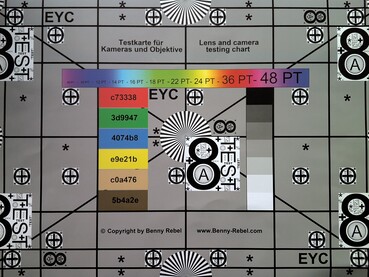












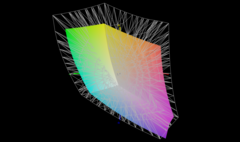

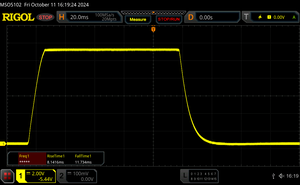








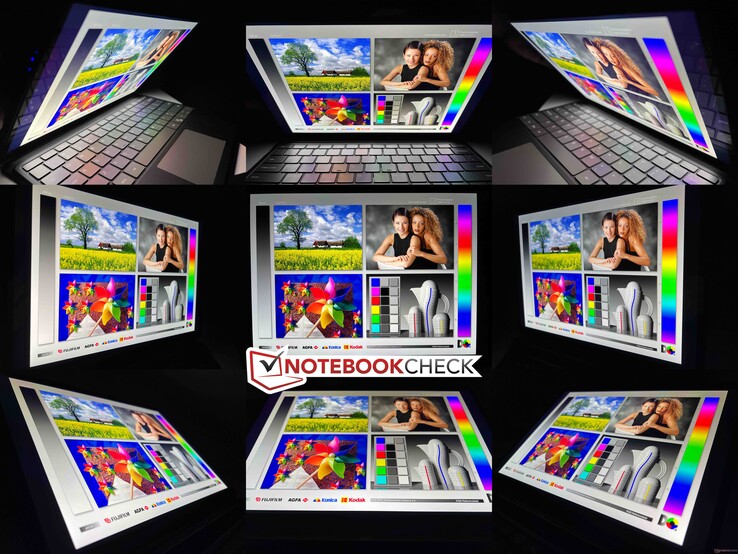






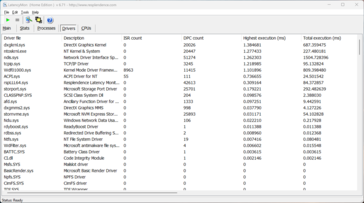

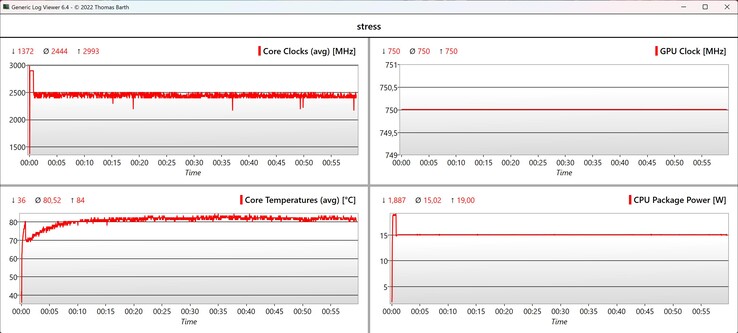

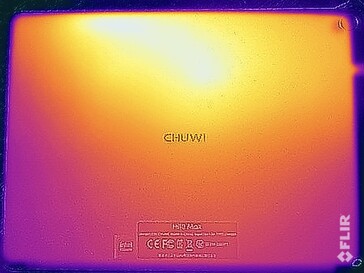

 Total Sustainability Score:
Total Sustainability Score: 
